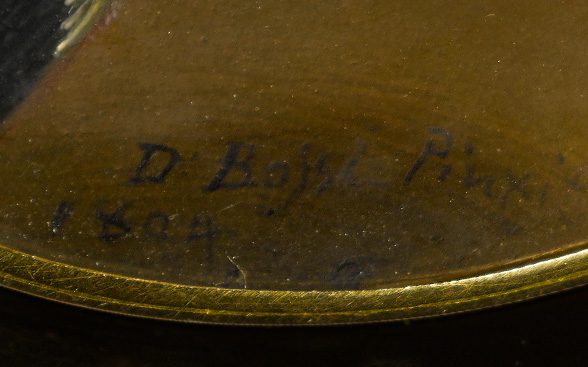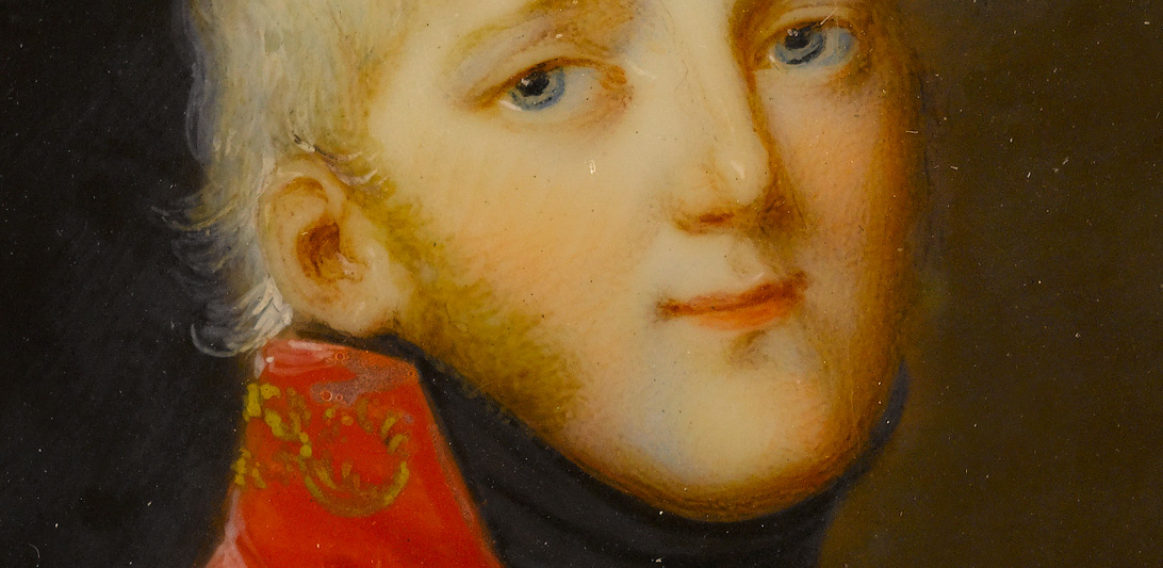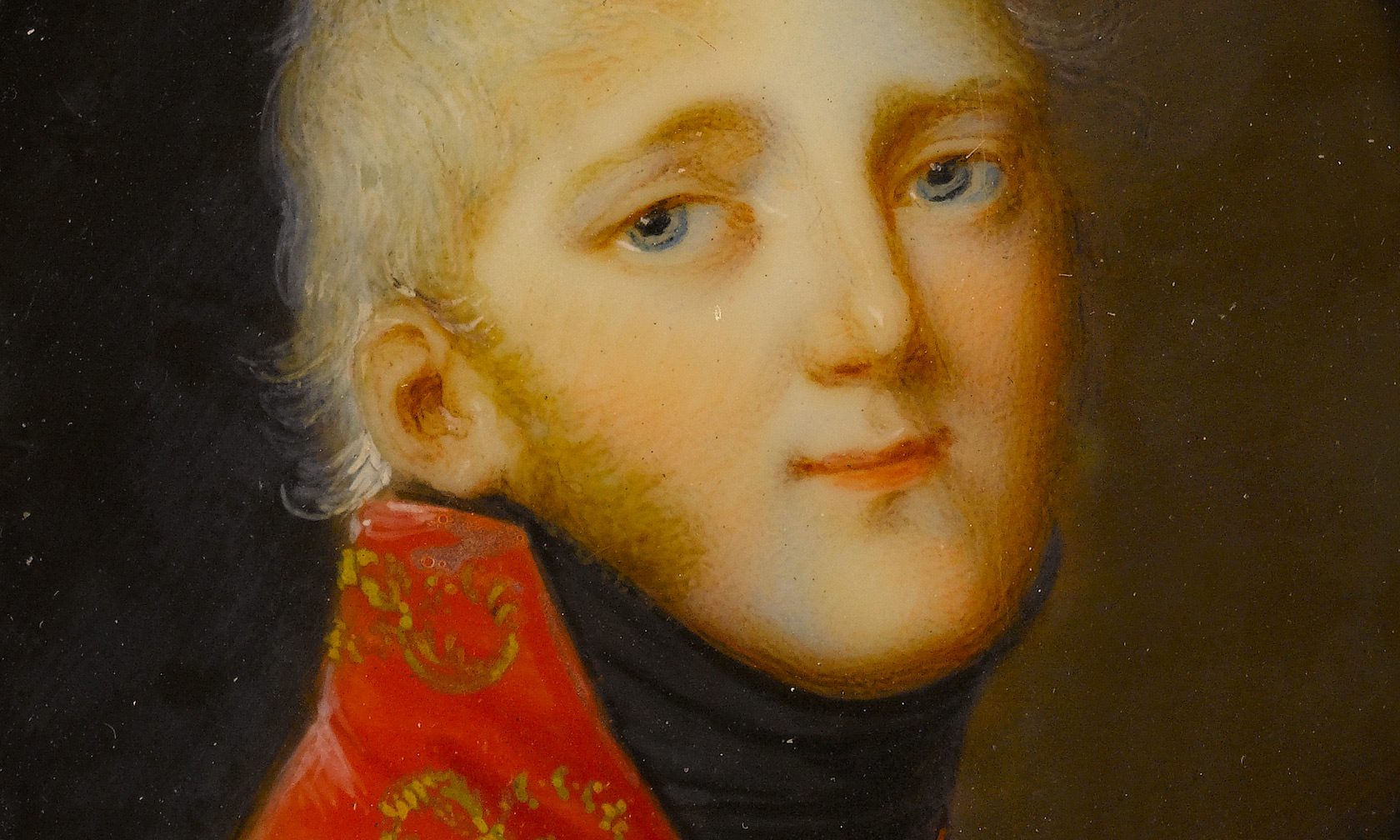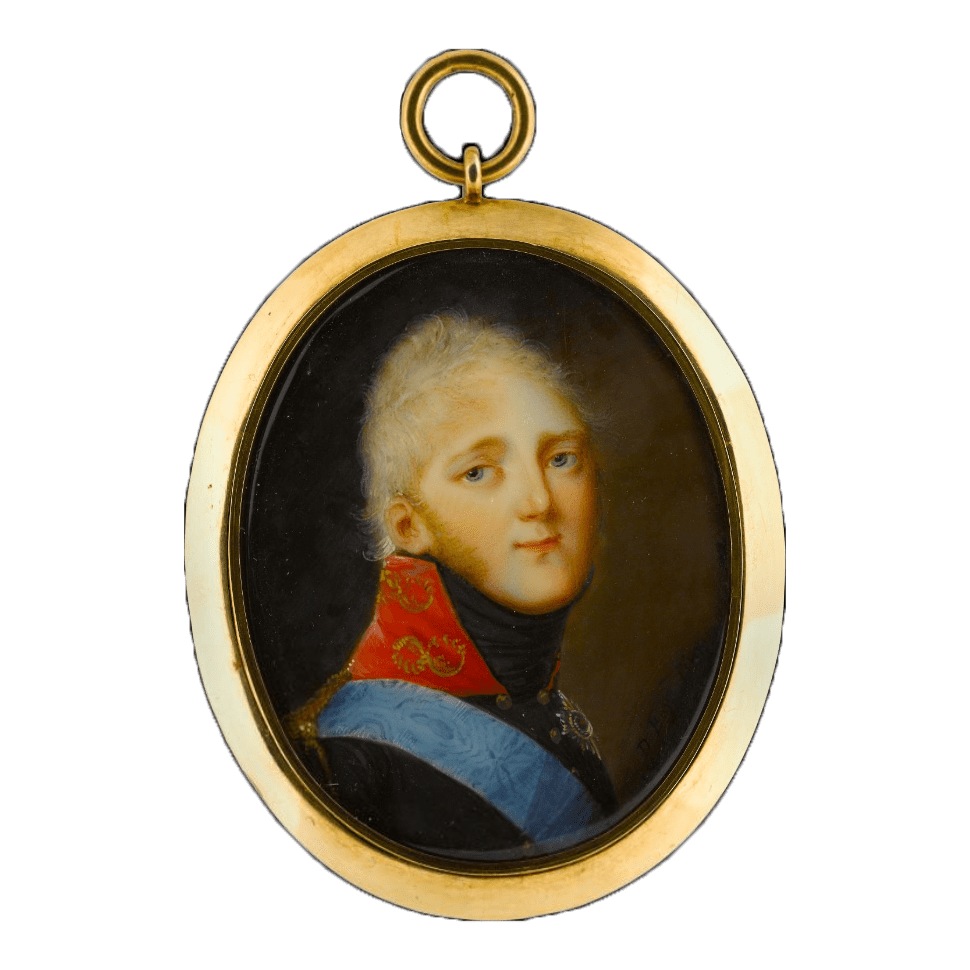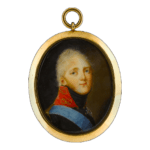This oval miniature with a gilt-metal mount depicts Tsar Alexander I (1777–1825). The Tsar stands in profile while turning his head towards the viewer: a distinctive angle that focuses attention on his relaxed facial expression, rather than the details of his military attire. As was common for miniatures of this period, the sitter’s features have been subtly exaggerated in order to convey their character: Alexander’s large eyes and prominent chin reflect his reputation as a military leader and compassionate statesman. He wears a black coat with a gold-figured red collar and golden epaulettes, and the blue moiré sash and breast-star of the Imperial Russian Order of St Andrew.
Tsar Alexander I was born in St Petersburg in 1777, and was the eldest son of Grand Duke Paul Petroich. His grandmother, Catherine the Great, took great interest in Alexander’s education, ensuring that he received a firm military training while encouraging in him a liberal, cosmopolitan outlook. He became Tsar in 1801, aged 23, following the death of his father. Though Alexander once described himself as ‘crushed beneath the terrible burden of a crown’, he nevertheless proved an effective reformer and moderniser who decentralised governmental power and relaxed censorship. His most significant achievement, however, was military. In 1812 he repelled Napoleon from Russia; two years later, he rode his army into Paris.
The Venice-born artist Domenico Bossi (1765–1853) achieved success as a miniaturist in several countries. After studying under the painter Giovanni Domenico Tiepolo, he travelled extensively throughout Europe, most notably Germany, Austria, Sweden and Russia. His works are held in major public collections internationally, including the National Museum, Warsaw, and the Rijksmuseum, Amsterdam.

